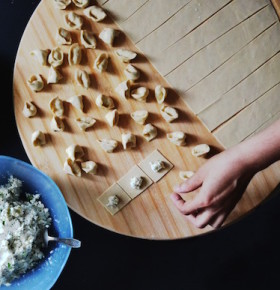
 IMPORTANT: If you are involved in any way with an event marketing food sampling program, you will want to read this story about an exciting eight-week event marketing program for a health food product distributed on the west coast.
IMPORTANT: If you are involved in any way with an event marketing food sampling program, you will want to read this story about an exciting eight-week event marketing program for a health food product distributed on the west coast.
Some of the results were absolutely unexpected and amazing!
The program’s primary goals
This wasn’t about some little blue-haired lady handing out plastic bowls and spoons to consumers as they shopped at their local grocery store. This involved an impressive food truck traveling up and down the west coast to the region’s biggest and best fairs and festivals. Consumer experiences were measured by an on-site survey administered as they explored the footprint. The concept was to:
- Distribute samples
- Educate consumers on the key attributes and benefits of the product
- Drive sales.
The execution strategy included three levels of engagement.
- Tier 1 – The Food Truck. The food truck was the focal point of the experience. Consumers were invited to sample the product. I use the term “sample” loosely here. Staff passed out full-sized portions of healthy, delicious recipes that showcased the product.
- Tier 2 – Package Reuse Workshop. Teams demonstrated clever ideas for reusing the product’s packaging. This was brilliant, because it the product into consumers’ hands and highlighted its eco-friendly image by demonstrating fun ways for the whole family to recycle.
- Tier 3 – Recipes and Cooking Tips. Two to three times per activation day, some of the west coast’s most popular bloggers made simple, delicious and healthy recipes whole families enjoyed. The bloggers demonstrated the recipes, explaining each step, educating the audience on the brand’s benefits. It was like sitting in the audience of a favorite cooking show.
Surprising Results
With most sampling programs, getting consumers to try the product makes the biggest impact. That wasn’t the case with this program. The sampling most definitely influenced consumers, with 87% samples reporting they were likely to purchase the brand in the future. It was fascinating to learn how the recipe tips and cooking demos impacted purchase intent: That tier generated a 91% positive response rate!
That significant rate was attributed to consumers having a more in-depth experience with the brand. When was the last time you changed the channel in the middle of a cooking show? Any way an already high purchase intent can be increased is a win for the account team and the brand. It justified the extra spend on the higher level of experience, because higher purchase intent means a higher program ROI. The whole point of event marketing is to generate more value for the client.
Check back for Part II of this post, where I share how different levels of engagement also influenced higher levels of brand education and message retention.
